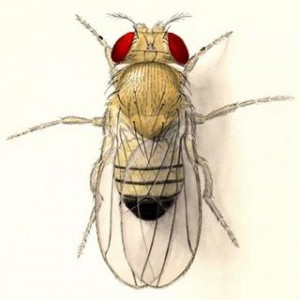Neuronal Regulation of Obesity in Fruit Flies
Monday, August 24, 2009 I have previously blogged on the usefulness of model organisms for the study of energy regulation.
I have previously blogged on the usefulness of model organisms for the study of energy regulation.
A study by Bader Al-Anzi and colleagues from the California Institute of Technology, Pasadena, CA, just published in NEURON, identifies a new set of nerve pathways that regulate food intake and fat deposition in drosophila.
Using transgenic manipulation of neural activity, the researchers were able to isolate two distinct neuronal populations (the c673a-Gal4 and fruitless-Gal4 neurons), which, when silenced, lead to increased fat storage by increasing food intake and/or changing metabolism.
In contrast, hyperactivating either of these neuronal group causes depletion of fat stores by increasing metabolic rate, decreasing fatty acid synthesis and changing the expression of genes known to regulate fat utilization.
These findings demonstrate that, as in humans, the fruit fly brain plays an important role in regulating energy intake and metabolism. This means that it may be possible to use these organisms for studying the regulation of appetite and fat storage as well as for screening for novel obesity treatments.
AMS
Edmonton, Alberta


